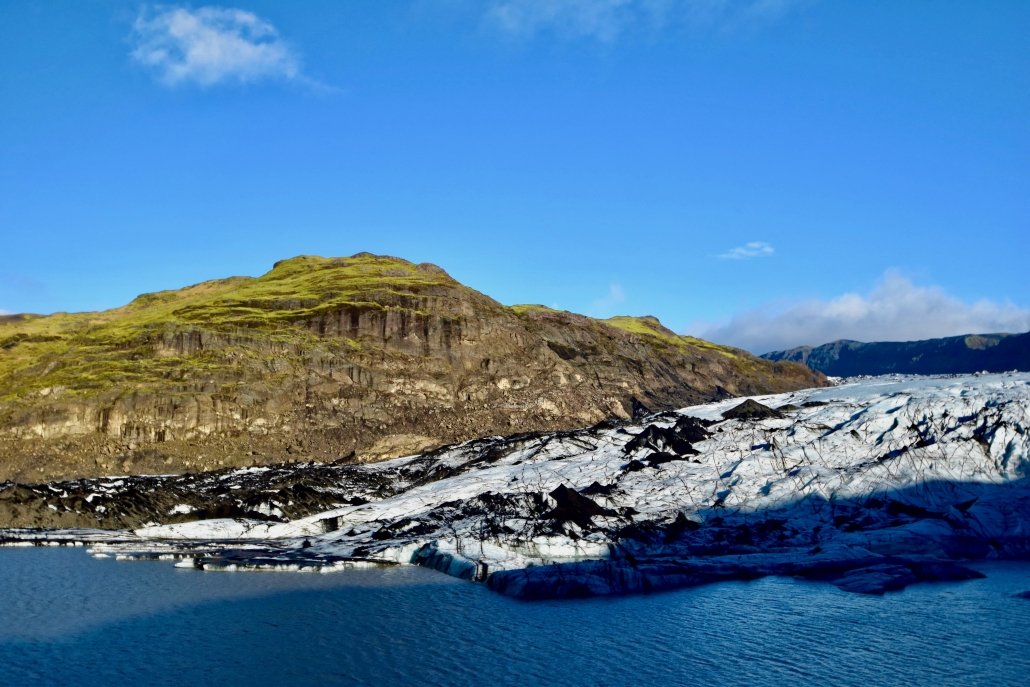Why does glacial deposition happen?
Material is deposited from a glacier as it melts in lowland areas.
Glaciers can transport ice a significant distance from the regions where snow falls. Temperatures rise as ice flows from upland to lowland areas. Meltwater from glaciers increases during summer months. Water flowing from the snout of glaciers eventually reaches the ocean. Rivers flowing from the snout transport vast quantities of sediment, known as glacial outwash.

The snout of the Sólheimajökull glacier. Notice the moraine on top of the glacier and within the ice.
As this material has been transported by a river outwash material is rounded and reduced in size due to attrition. The material is deposited and sorted. The finest material is carried the furthest from the glacier. The snout of a glacier does not retreat under normal conditions as new ice flows from the upland areas to replace and balance the water loss. The glacier acts like a conveyor belt transporting water and debris from upland to lowland areas. Material that is deposited by a glacier is called glacial till.
An outwash plain typically forms close to the snout of a glacier. Outwash plains are made up of outwash deposits and are characteristically flat and consist of layers of sand and other fine sediments. The image below shows an outwash plain in Iceland.
Use the images below to explore related GeoTopics.